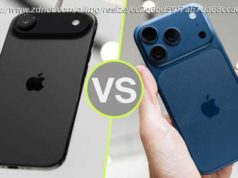Before there were smartwatches, digital watches were the most high-tech timepieces you could buy. We
We review products independently, but we may earn affiliate commissions from buying links on this page. Terms of use.
In 1972, Hamilton introduced the world’s first commercial electronic digital wristwatch. It retailed for the pricey sum of $2,100, which amounts to over $12,000 today. However, by the end of the 1970s, digital watches would regularly retail for under $10 a piece. In the 1980s, they could be found in cereal boxes as cheap giveaways, and today, they have been replaced by smartwatches. How did we get from there to here? We’re about to find out.
The electronic digital wristwatch has undergone not only dramatic evolutionary changes, but also dozens of offshoot permutations that feature every type of functionality you could imagine squeezing into a wristwatch. However, the most dramatic change of all involved price, as we’ve seen above.
Below, we’ll look at some notable firsts in the evolution of the electronic digital watch, and examine a surprising mechanical precursor that few people today know about. This collection is by no means comprehensive, so feel free to share your own favorite digital watch history moments in the comments.
( This story was originally published on April 15,2012 .)
This article originally appeared on PCMag.com .
While electronic digital wristwatches first appeared in the 70s, it’s worth nothing that the first digital wristwatch actually debuted in the 1920s. How can this be? Well, those earlier watches used mechanical processes to display the time in discrete digits (hence, « digital ») on the watch face. They usually used various forms of wheels with numbers painted on them that clicked into view at the right time. Seen here is the Cortebert Digital Wristwatch from the 1920s, which many believe to be the first digital wristwatch ever sold. No batteries here, of course—you had to wind it like any other watch from the era. (Photos: Unique Watch Guide)
The very first electronic digital watch to reach the market, the Hamilton Pulsar P1, launched in April 1972 for $2,100. It used a light emitting diode (LED) display behind a synthetic ruby crystal, all encased in 18-karat gold. The display, produced by a complex 25-chip circuit, was so power-hungry that it lit up only temporarily when the user pushed a button on the front of the unit. A similar model was featured prominently in the James Bond movie Live and Let Die just one year later. (Photo: diginut)
The very first liquid crystal display (LCD) watch was introduced in late 1972, and it used a different type of LCD technology than we’re familiar with today. These Dynamic Scattering LCDs were power-hungry and unstable, and the market soon moved on to TN Field Effect displays. One of the first models to use the newer display was the Seiko 06LC. Its design took a familiar form for an LCD watch that would be seen thousands of times over the next four decades.
Only three years after the birth of the LED wristwatch, several manufacturers showed off prototypes for models containing fully functional calculators. One of the first to reach the market was the Hamilton Pulsar Calculator Watch in 1976. Its buttons were so small that the user could only press them using an included stylus. Another prominent calculator watch, the Hewlett-Packard HP-01, launched a year later.
Texas-Instruments (TI) revolutionized the digital wristwatch industry with the introduction of the first under-$20 LED watch in 1976. Soon, TI produced licensed LED watches that tied in with the release of Star Wars in 1977 for only $16.95, and the price kept dropping. By the end of the decade, industry price cutting had driven several high-end digital watch manufacturers out of business. TI itself suffered from its own success—dropping profit margins forced the company to exit the watch business by 1980. By then, digital watches had become inexpensive commodity items.
Around 1980, plastic case LCD watches dramatically dropped in price, so manufacturers found they had to keep adding functionality to justify a profitable price point. Here’s one example: some readers out there who grew up in the 1980s and early 1990s may remember various licensed Nintendo game watches that allowed the wearer to play miniature games of The Legend of Zelda and Super Mario Bros. Amazingly, the first game watches emerged around 1980; here we see one of the first, the Game-10, which played a three-line interpretation of Space Invaders (1978). Conveniently, it also told the time. (Photo: super_hectorus / DWL)
While the first calculator watch landed in the mid-1970s (as we’ve already seen), Casio popularized the gadget in the 1980s, with its line of cheaper, plastic-housed watches, like the C-80. Casio’s calculator watches were also notable for having buttons big enough for your fingers to reliably push without a stylus. Such watches soon became the ultimate nerd accessory, and are yet to be equaled. (Photo: Adam Harras / Vintage LCD)
The Seiko TV Watch did something astounding for 1982—it allowed owners to view live broadcast TV on a tiny blue/gray LCD screen embedded into the watch face. There’s a catch, of course: Most of the watch’s TV tuning electronics were housed in an external box that hooked to the top of the watch. Still, the fancy timepiece served as a fully functional, albeit primitive, motion-capable LCD on its own. And to think this had been achieved only one decade since the first appearance of the electronic digital watch.
Watches with built-in database functionality first appeared on the market in the 1980s, but they weren’t very useful without a way to transfer the data to and from a more permanent medium like a computer (otherwise, the watches would lose their data if the batteries died). Timex solved this problem in an innovative way, with the Data Link 150, which allowed the user to transfer information from a PC to the watch via an optical sensor on the watch’s face. The user simply held the watch up to a PC monitor and special software on the PC made the monitor flash in a pattern that the watch could read, thereby transmitting the data to the watch. (Photo: Adam Harras / DigitalWatchLibrary.com)
The Casio Wrist Camera was the first wristwatch with an integrated digital camera. Sure, it only captured 120-by-120-pixel photos in grayscale, but the fact that Casio crammed a working camera into a watch turned many heads.






